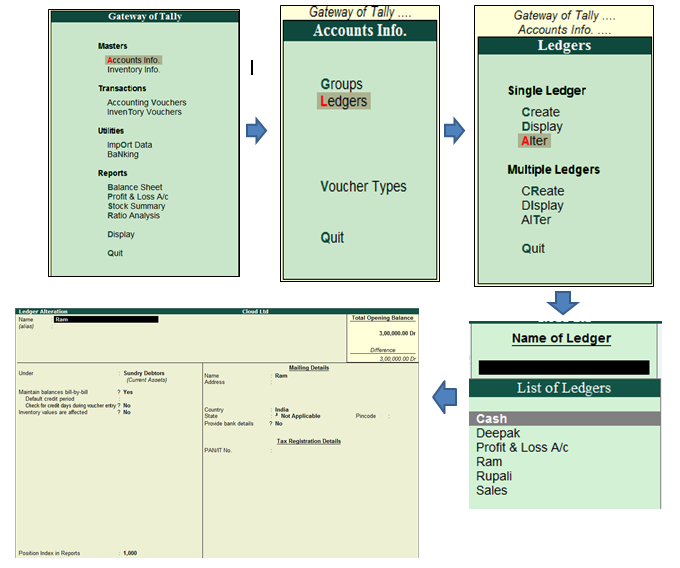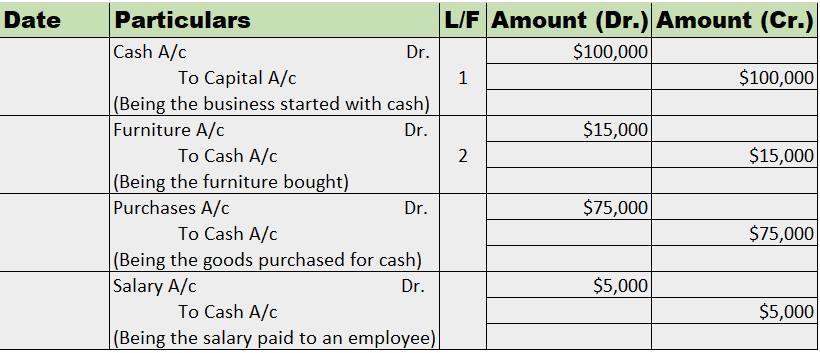Changing a Ledger name in Tally is an easy process. The requirement of changing the name of a ledger may arise in three situations: Situation 1: When we need to change a ledger's name, right after its creation while being in the ledger creation menu Situation 2: When we realize the need to change aRead more
Changing a Ledger name in Tally is an easy process. The requirement of changing the name of a ledger may arise in three situations:
- Situation 1: When we need to change a ledger’s name, right after its creation while being in the ledger creation menu
- Situation 2: When we realize the need to change a ledger’s name during passing an entry in any voucher.
- Situation 3: Other situations where we are not on the Voucher Creation window or ledger creation window.
In Tally, there are plenty of shortcut keys that can ease the way we work on it. My methods will be based on such shortcuts on Tally ERP 9.0.
Situation 1
Often just after ledger creation, we realize that we have made mistake in entering the name of the ledger.
Many opt to choose this long path to alter the ledger’s name.
Exiting Voucher creation menu → Gateway of Tally menu → Accounts Info → Ledger option → Alter option → Select the ledger → Ledger alteration window opens.

Instead of it, you can choose to use Page Up key while on the ledger creation window. Press the Page-up key till you reach that ledger. Then you can edit its name or any other details.
Pressing the page up key automatically opens the ledger alteration mode and lets the user scroll through the ledgers available.
The ledger alteration window looks like this:

Situation 2
Sometimes, while performing entries into vouchers, we feel the need to alter a ledger’s name.
This can be done by pressing Ctrl + Enter key with the cursor on the ledger’s name in the voucher creation menu.
On pressing Ctrl + Enter Key, the ledger alteration window will open, from where the user can alter the ledger name or any other details.
Situation 3
When the user is not either on the voucher creation menu or on the ledger creation menu, then the ledger’s name has to be altered by going through the following steps:
Gateway of Tally menu → Accounts Info → Ledger option → Alter option → Select the required ledger → ledger alteration window opens.
That’s it. These are different approaches to changing a ledger’s name.
One thing that is common among all approaches is the opening of the Ledger alteration window at the end. Hence, it is only through the Ledger alteration window we can change a ledger’s details including its name.
See less
















Working capital is defined as the difference between current assets and current liabilities of a business. Current assets include cash, debtors and stock whereas current liabilities include creditors and short term loans etc. FORMULA Current Assets - Current Liabilities = Working Capital Zero workinRead more
Working capital is defined as the difference between current assets and current liabilities of a business. Current assets include cash, debtors and stock whereas current liabilities include creditors and short term loans etc.
FORMULA
Current Assets – Current Liabilities = Working Capital
Zero working capital is when a company has the exact same amount of current assets and current liabilities. When both are equal, the difference becomes zero and hence the name, Zero working capital. Working Capital may be positive or negative. When current assets exceed current liabilities, it shows positive working capital and when current liabilities exceed current assets, it shows negative working capital.
Zero working capital can be operated by adopting demand-based production. In this method, the business only produces units as and when they are ordered by the customers. Through this method, all stocks of finished goods will be eliminated. Also, raw material is only ordered based on the amount of demand.
This reduces the investment in working capital and thus the investment in long term assets can increase. The company can also use the funds for other purposes like growth or new opportunities.
EXAMPLE
Suppose a company has Inventory worth Rs 3,000, Debtors worth Rs 4,000 and cash worth Rs 2,000. The creditors of the company are Rs 6,000 and short term borrowings are Rs 3,000.
Now, total assets = Rs 9,000 ( 3,000 + 4,000 + 2,000)
And total liabilities = Rs 9,000 ( 6,000 + 3,000)
Therefore, working capital = 9,000 – 9,000 = 0

See less